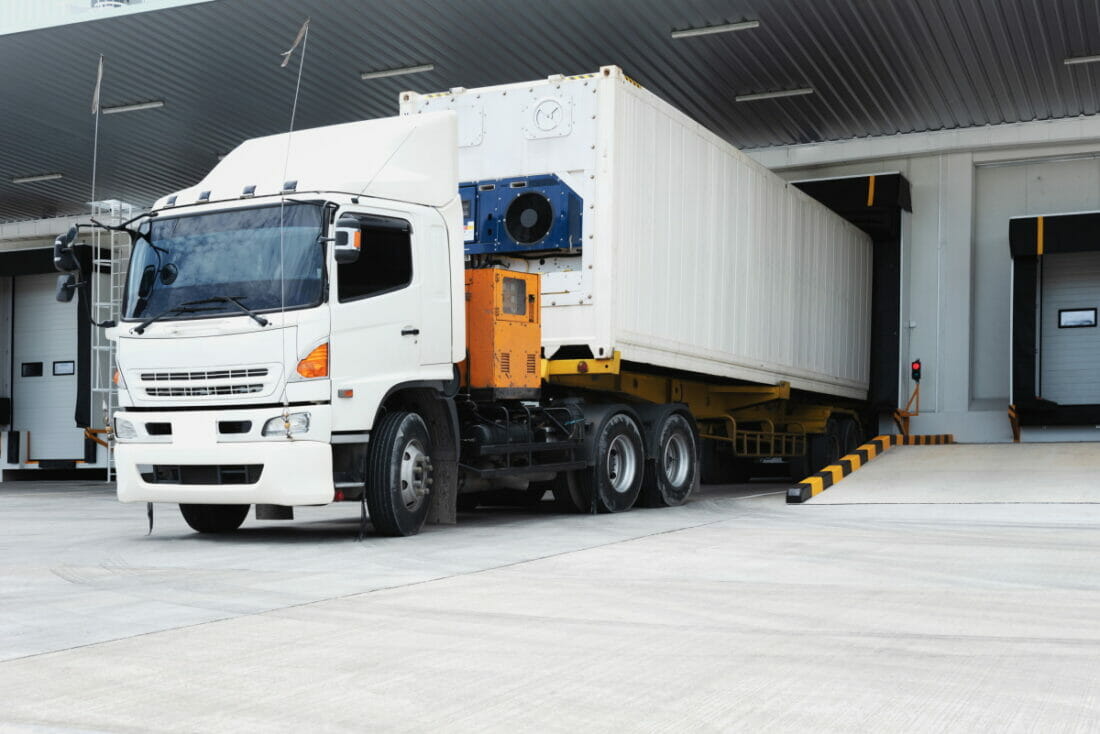What is the cold chain for food, frozen goods, and medicine?
The cold chain is the process of maintaining the temperature of food or pharmaceutical products throughout their journey from production to sale. Within this cycle, cold logistics play a fundamental role in enabling goods to reach the end consumer intact. The cold chain is one of the most dynamic sectors in which C.T.I. International Forwarder operates, providing our customers with an efficient and cutting-edge service.
What is a cold chain and what are its stages?
For companies working with fresh food, frozen products, or medicines, the cold chain is one of the most crucial aspects of safe and sanitary product delivery as it allows avoiding thermal shocks that may alter product properties. In fact, cold chain is precisely the process of maintaining a constant temperature of these delicate goods throughout their life cycle from production to sale, including transport, storage and loading and unloading.
In order for these products to arrive to the end customer intact, it is therefore necessary to ensure the efficiency of each stage of the cold chain, namely:
- After production, the first storage of the article takes place, with possible rapid blast chilling
- Storage in temperature-controlled cold stores
- Transport from production centres to storage warehouses using suitable vehicles
- Storage in warehouses
- Transport to distribution centres, using vehicles equipped to keep the temperature under control
- Refrigerated point-of-sale storage
Every single step is of fundamental importance to avoid product deterioration. This is why the entire cold chain must be controlled through a quality management system that documents and shares updated data with all operators involved.
Given the care required in this process, our company ethos of compliance with regulations provides a selected and trained staff to deal with every aspect of cold logistics, ensuring the correct storage of products.
Cold chain safety and relevant regulations
The cold chain requires qualifications, precision, and strict compliance with the laws relating to food hygiene, as set out in the HACCP (Hazard Analysis and Critical Control Points). This set of regulations aims at guaranteeing product health and is a true control system that involve all the players in the cold chain: producers, transporters, and distributors.
Therefore, to avoid any contamination or degradation, operators involved in the various cold chain stages are required to meticulously comply with:
- Constant cleanliness and hygiene of premises, equipment and means of transport
- Pre-established critical limits in the various stages of the cold chain
- The temperature capacity of different means of transport
What temperatures should be maintained in the cold chain?
Temperature-sensitive products must therefore follow precise hygiene measures and respect the temperatures laid out by the law. Frozen foods, as declared by Legislative Decree No. 110 of 27 January 1992, must maintain a constant temperature of -18° Celsius, however, during transport, small upward fluctuations of no more than 3°C are permitted. As far as fresh food is concerned, each has its own reference temperature, for example:
- Meat +7° C
- Fish +2° C
- Fresh products +5° C
Finally, the same applies to pharmaceutical products which, depending on their type, are subject to specific temperatures and tolerances. Not only that, in some cases additional parameters such as the level of air quality are also required, which can make the correct cold chain process even more difficult.
It is very important that these temperature limits are respected as the interruption of the cold chain causes the formation of certain micro-organisms that can deteriorate the product and make it harmful to the consumer’s health.
Transport and cold logistics
In regards to cold logistics, the transfer of temperature-sensitive products requires the use of suitable means of transport, manufactured according to European ATP (Accord Transport Perishable) standards. In addition, the transporter is charged with the task of:
- Arranging the goods for proper cold air circulation
- Measuring the temperature of the products during the entire journey
- Documenting the data in order to make it available to regulatory bodies
This is therefore a complex sector that requires experience, expertise and attentive care. For this reason, it is always advisable to rely on expert companies, like us here at C.T.I. International Forwarder. Thanks to a widespread network of operators and state-of-the-art equipment, we guarantee efficient management of the cold chain in both the storage and transport of products at controlled temperatures and ensure maximum protection for our customers and end consumers.



No Comments